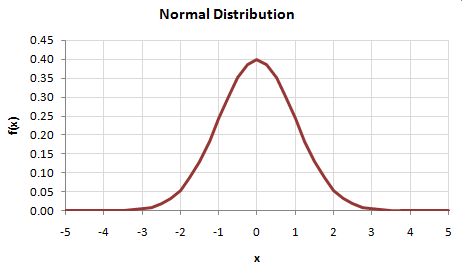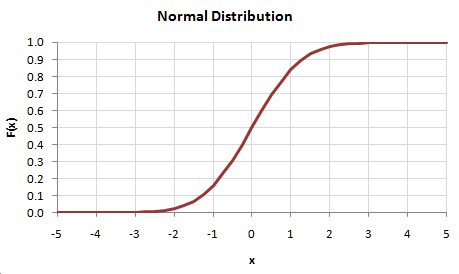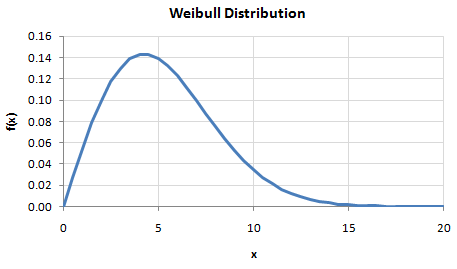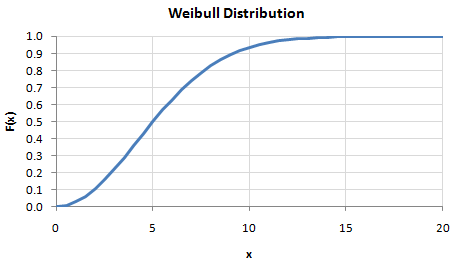
| Probability Transformation |  |
A probability transformation is a statistical procedure by which one modifies a set of numbers to conform to a desired probability density function.
To perform a probability transformation, Windographer first calculates the cumulative distribution function of the original set of data -- we will refer to this as the 'original CDF'. Then for each original data point, it performs the following steps:
Imagine that we have a set of data that conform to a normal distribution, and we want to transform it so that it conforms to a Weibull distribution. (Windographer does exactly this when synthesizing wind speed data.)
If our normally-distributed data had a mean of zero and a standard deviation of 1, its probability density function would look like this:

And its cumulative distribution function -- the original CDF -- would look like this:

Imagine that we wish to transform this data to fit a Weibull distribution with a mean value of 6 and a Weibull k value of 2. Our desired probability density function would therefore look like this:

And our desired cumulative distribution function -- the desired CDF -- would look like this:

To transform each value in the original dataset, we would refer to the original CDF to find its corresponding y-value, then we would take that same y-value to the desired CDF and find its corresponding x-value.
An original value of zero, for example, corresponds to a CDF value of 0.5 on the original CDF. Looking at the desired CDF, we find that the value corresponding to a CDF value of 0.5 is approximately 5. That means that any zero value in the original dataset gets transformed into a value of 5 in the transformed dataset. Similarly, an original value of -1 would be transformed to a value of approximately 2.5, and an original value of 1.5 would be transformed to a value of approximately 10.
This example looks at transforming data from a normal distribution to a Weibull distribution, but with this same probability transformation approach, we could transform from any distribution to any other distribution.
See also
Cumulative distribution function